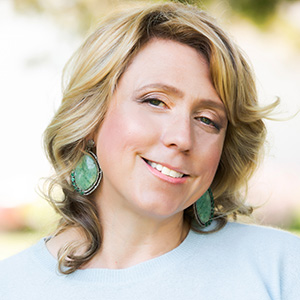
Even though he’s held numerous roles in the gem and jewelry trade (including senior gem editor at JCK from 1997 to 2009!), Gary Roskin, founder of the Roskin Gem News Report, has always considered himself first and foremost a teacher.

“I started teaching at GIA when the diamond investment boom went bust in ’83-84, and I loved it,” Roskin tells JCK. “When I went to work for Tom Tashey at the EGL L.A. lab as an assistant director, I ended up writing a book on diamond grading. And when I took the job at JCK, I was back to teaching again, only through journalistic form. It was a natural thing to start the Roskin Gem News Report to continue the teaching thing.”
Every week, with the occasional holiday break, Roskin, who is based in Downingtown, Pa. (about 30 miles west of Philadelphia), publishes a newsletter highlighting gem news of interest to retailers, consumers, and even laboratory staff.
“I try not to be a Gems & Gemology or a journal of gemology, but I have a number of retailers and consumers who want to see what’s on the red carpet,” Roskin says. “I try to make it fun and appealing for everybody.”
Roskin does his research the old-fashioned way: by traveling to events, trade shows, and conferences where the gem industry’s nitty-gritty issues often rise to the fore. His travel docket for the second half of 2023 includes stops in Providence, R.I., for the National Association of Jewelry Appraisers’ summer conference; Denver, for the third annual HardRock Summit; and Vancouver, for the Canadian Gemmological Association’s 65th anniversary conference.
“I just came back from Harvard, where I attended the State of the Art Jewelry Summit,” says Roskin. “That was a mind-full. A full day of discussions with associations and businesses that have ideas on how the jewelry industry should move forward with responsible sourcing. The essence was wrapped up in the final presentation by one of the professors: The industry knows what it needs to do, but—how do I put this gently?—it needs to be more coordinated. I’m writing about that right now. It’s not gemology, but it’s something gem dealers in the industry need to know about.”
Below, Roskin, who served as CEO of the International Colored Gemstone Association (ICA) from 2015 until 2022—when Doug Hucker assumed the position—talks to us about the state of the gem trade in mid-2023, what advice he’d give retailers hunting for colored stones, and why gem “oddities” are his thing.
Give us your snapshot of the gemstone business at this point in time.
I see the colored stone industry doing very well overall. There’s a little bit of hesitation in sourcing gem materials—wholesalers and retailers really want to know where they’re from. And they are desperately trying to stay away from purchasing anything from Russia or Myanmar. You try to be as ethical and transparent as possible—that’s really coming into play with most retailers, and the colored stone trade is coming along with it.
On the wholesale end, the cutters, the guys in Idar-Oberstein [Germany] and Bangkok that are really used to getting nice material from Burma and Russia, are having to make a left turn and look elsewhere. For example, with Russian demantoid being an important stone for the guys in Idar, they’re probably going to find John Ferry, who has his demantoid mine, Prosperity Earth, in Madagascar. He’s got really fine material, he knows the mine, he owns the operation, he makes sure everyone mining is getting paid and is well taken care of. He’s one of the guys you’ll see on panels talking about responsible sourcing. But there are not a lot of him.

What about current pricing? Are costs on most gem materials still up?
What I’ve been seeing is a very strong market all the way around. I don’t see anything coming down. If anything, prices are going up, especially on blue sapphires.
Which colors or gem varieties are trending at the moment?
All different colors. It doesn’t have to be a straight pink diamond, it could be a purplish pink. It doesn’t have to be straight yellow sapphire, it could be orangey pink.
If I were talking to retailers as to what they might look for, I’d say look for gem materials that are better faceted. With better cutters behind the wheel, you get a beautiful stone no matter the color. Specialty cutters like John Dyer, where you know the faceting is terrific.
One of the pieces I recently saw and thought was spectacular was from Omi Privé: the hauyne. They’re always really tiny stones, they’re shocking blue, they’re magnificent. But I hadn’t seen, until Omi, anybody use it as an accent material. And I thought, wow, this is great. It’s always been a favorite of mine. It’s a pretty rare material so it’s hard to sell because it’s pricey, and it’s an accent stone nobody’s heard of.

This is where the Roskin Gem News gets fun: I saw a post on LinkedIn or Facebook from a gem dealer in Europe, who had a nice story about a lady who walked up to his booth and he sold her a 2 mm blue hauyne. She had been looking for it for years. Why? Because her great-great-great-great-grandfather or great-uncle, he was R.J. Haüy, the mineralogist who named the gem after himself. She’d been looking for a sample of this rare stone, and the dealer she found was Nicolas Zylberman. It was a nice little story for the Roskin Gem News, where I talk about the chance meeting but also where it’s from.
I bet you didn’t come across esoteric stones like that in the 1990s. What are the biggest changes you’ve seen in the gem trade in the nearly three decades you’ve covered the market?
Back in the ’90s and early 2000s, you typically saw the birthstones and the “big three”—emerald, ruby, and sapphire. And maybe you’d see Imperial topaz.
The biggest thing I ran into that was the odd man out in the early 2000s was when I was at the JCK show and a former classmate of mine from GIA pulled me aside and said, “You’ve got to see this,” and dragged me to Galatea’s booth where he showed me a Tahitian pearl with a turquoise inside. They were using turquoise beads as the implant instead of a mother-of-pearl bead. And of course, it went completely against the grain in terms of what you could use in culturing pearls. That, to me, is fun to write about, these little gem oddities.
Have you always focused your coverage on “gem oddities”?
I write about any gem materials: diamonds, colored stones, any of the organics, anything that could be used as gem material and end up in a piece of jewelry. That reminds me of when I was working in New York a while ago. I was walking along Fifth Avenue and I walked by [the Brazilian jeweler] H. Stern. They had a beautiful necklace in the window, in 18k gold, and it had a bezel-set rutilated quartz. At the time, rutilated quartz was $5—it was cheap material you’d find in wire-wrapped jewelry, and here was H. Stern on Fifth Avenue with a huge price tag on it.

Jewelry designers are always looking for affordable material and they make it important. So the designer at H. Stern made the rutilated quartz important by setting it in 18k gold and placing it in a beautiful necklace. And a year later, the price of rutilated quartz quadrupled. This is the kind of thing I like to put in the news.
Is there a gem material you feel is on the cusp of greater popularity?
I’m a real inclusion nut. Typically, for a retail jeweler, the only inclusion you want to see is demantoid with a horsetail inclusion. That’s classic Russian material with a burst of crystals. But for me, any gem material that has any type of inclusion will grab my attention.
There are a lot of quartzes—like strawberry quartz with a reddish material inside the rock crystal—that are always fascinating for me. Every time I see this kind of material, I think back to H. Stern. Their designer should come and take a look and put it in 18k gold and have fun with it.
Top: Demantoid garnet from Prosperity Earth (photo courtesy of Prosperity Earth)
- Subscribe to the JCK News Daily
- Subscribe to the JCK Special Report
- Follow JCK on Instagram: @jckmagazine
- Follow JCK on X: @jckmagazine
- Follow JCK on Facebook: @jckmagazine







